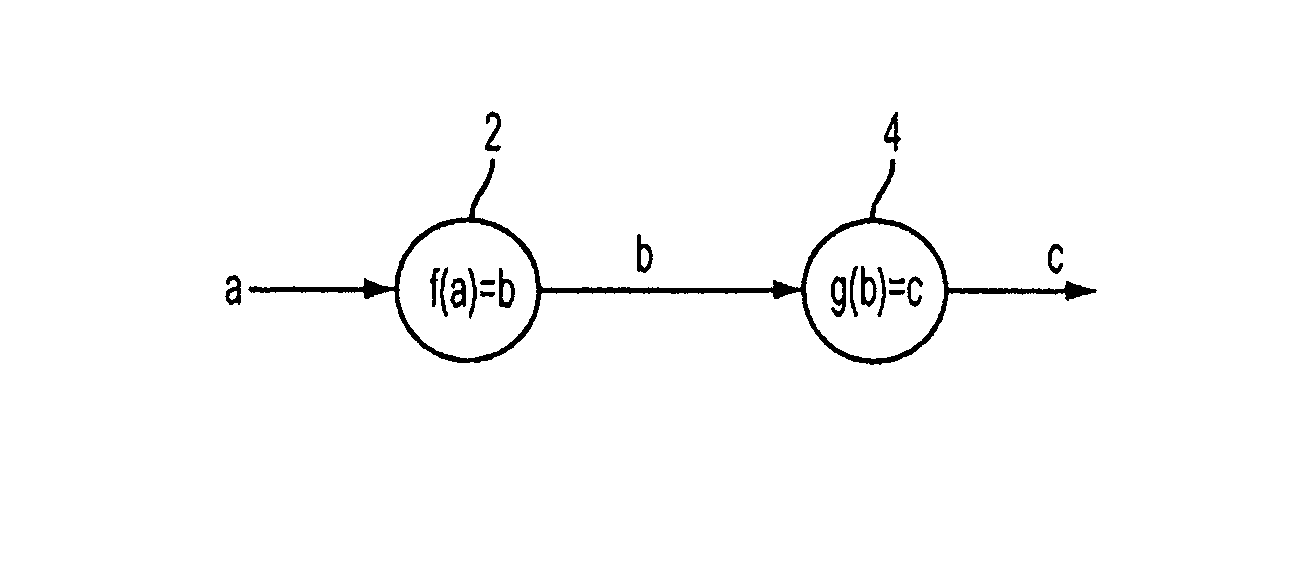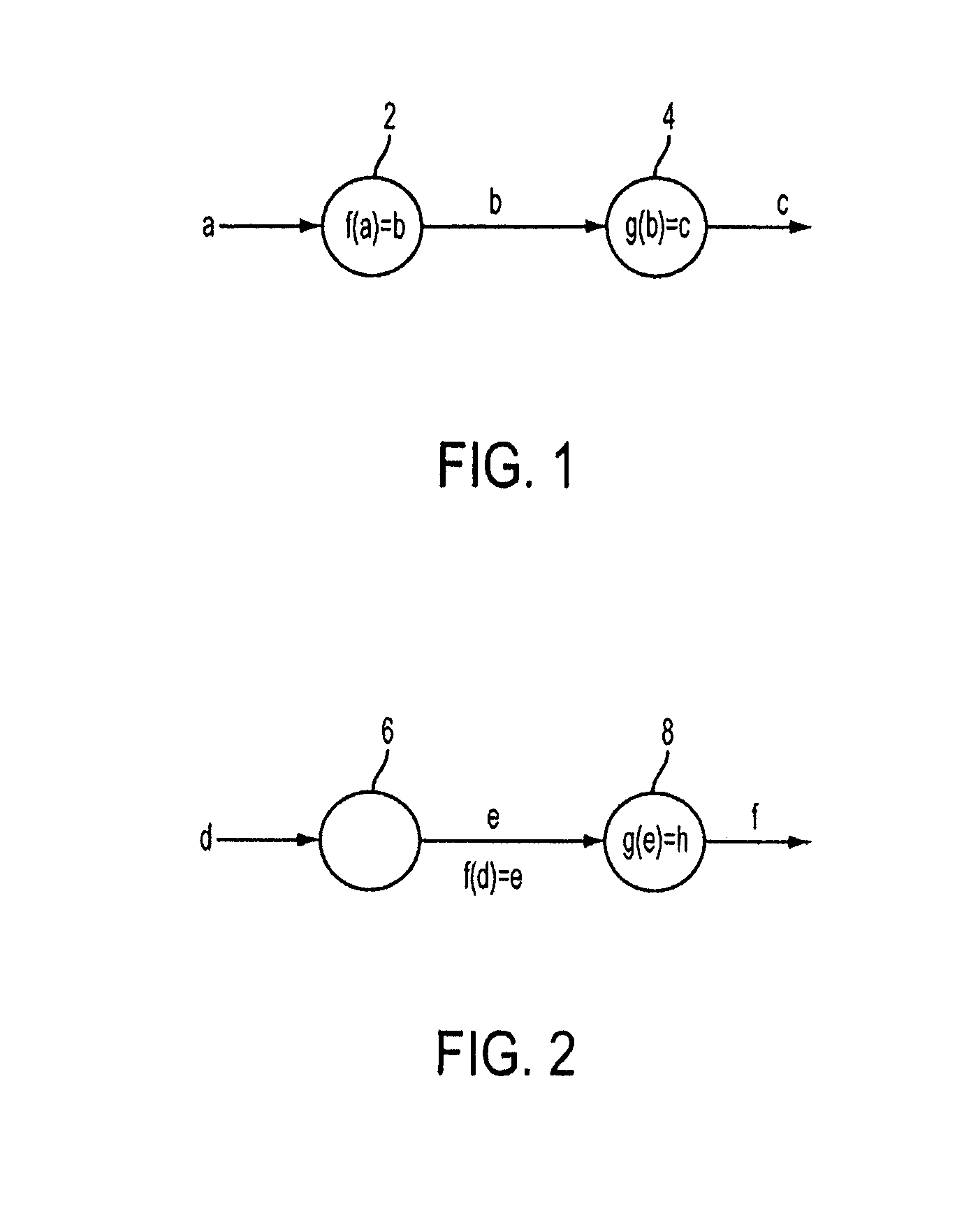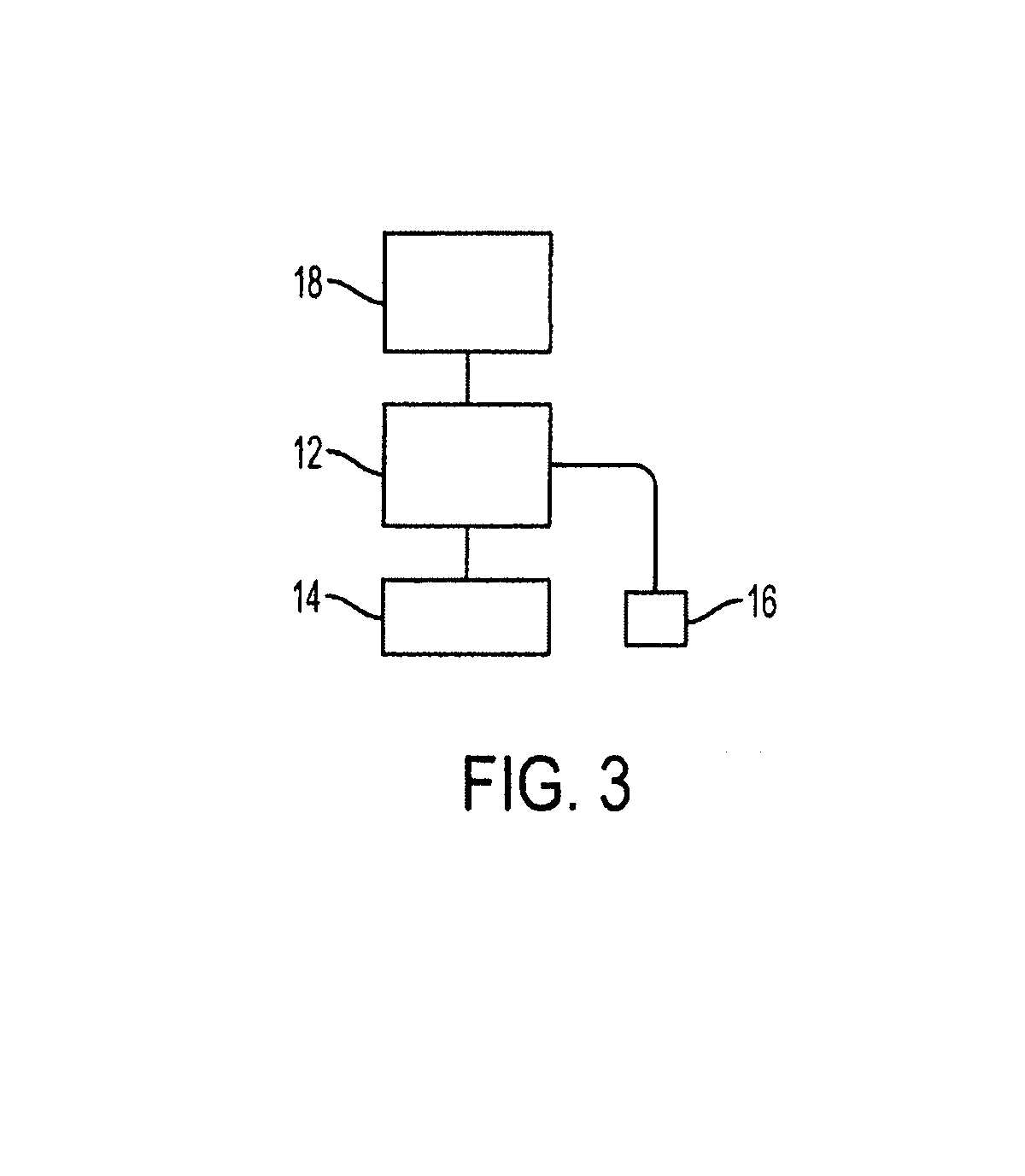System for passing algorithms with polymorphic parameter sets in a dependency graph of a graphic creation process
a dependency graph and algorithm technology, applied in the field of system for evaluating dependancy graphs, can solve the problems of insufficient for those writing replacement algorithms, the graph is a static object, and the fixed argument list of function calls is not sufficient for replacement algorithms, so as to avoid the necessity of traversing
- Summary
- Abstract
- Description
- Claims
- Application Information
AI Technical Summary
Benefits of technology
Problems solved by technology
Method used
Image
Examples
Embodiment Construction
[0024]The present invention is directed to a system for flowing algorithms through a dependency graph (DG) where data passing is replaced by passing the algorithm that generated the data.
[0025]In a typical dependency graph evaluation, a function of a source node 2 (see FIG. 1), such as f(a)=b is called or evaluated as part of the evaluation of the node where a is the input data to the node 2 and b is the output data from the node 2. The output data is passed to a destination node, such as node 4, where the function for that node 4 (g(b)=c) is called or executed. Each time the input data changes, this two node evaluation process must be performed again. In the present invention, in contrast, the function itself is passed along with the data from source node 6 (see FIG. 2) to destination node 8 so that essentially g(f(d))=h is executed. As a result, if the input data “d” changes, or is a data series, the function can be evaluated without being burdened with the overhead of traversing ...
PUM
 Login to View More
Login to View More Abstract
Description
Claims
Application Information
 Login to View More
Login to View More - R&D
- Intellectual Property
- Life Sciences
- Materials
- Tech Scout
- Unparalleled Data Quality
- Higher Quality Content
- 60% Fewer Hallucinations
Browse by: Latest US Patents, China's latest patents, Technical Efficacy Thesaurus, Application Domain, Technology Topic, Popular Technical Reports.
© 2025 PatSnap. All rights reserved.Legal|Privacy policy|Modern Slavery Act Transparency Statement|Sitemap|About US| Contact US: help@patsnap.com



